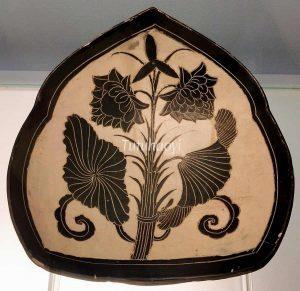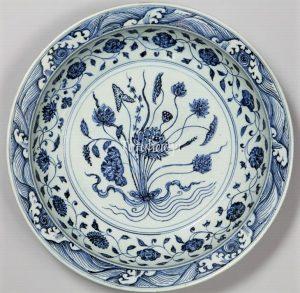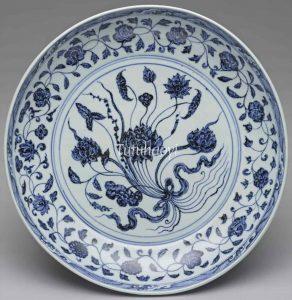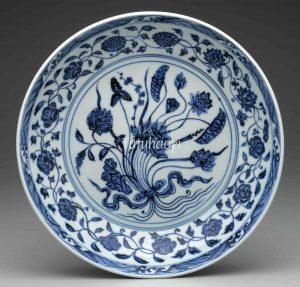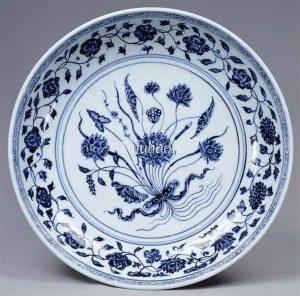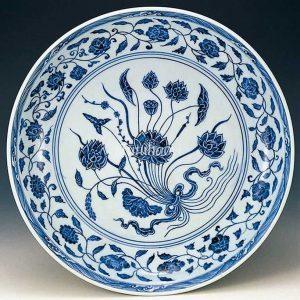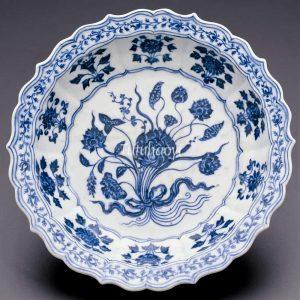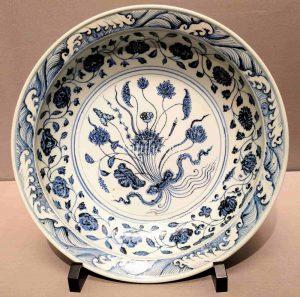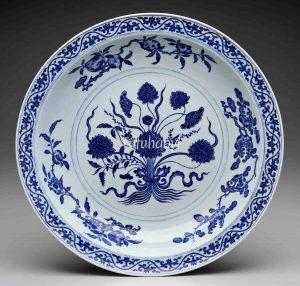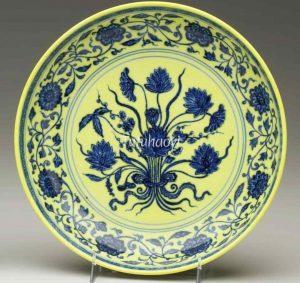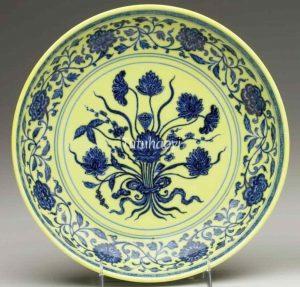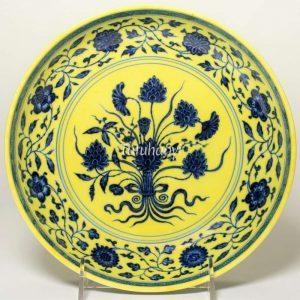Lotus bouquet
一把莲
© Tutuhaoyi.com owns the copyright of the description content for the images attached. Quoting all or part of the description content on this page is permitted ONLY IF ‘Tutuhaoyi.com’ is clearly acknowledged anywhere your quote is produced unless stated otherwise. (本页描述内容版权归Tutuhaoyi.com所有,转发或引用需注明 “Tutuhaoyi.com”, 侵权必究, 已注开源信息的条目除外。)
The motif of Yi Ba Lian 一把莲 is also called ‘yi shu lian’ (一束莲). It is presented as ‘a ribbon-tied bouquet of lotus in bud, full bloom, and seed pods accompanied by leaves, with or without some other water plants such as arrowheads’. The earliest example of this design can be traced back to those found on Yaozhou ware potted in the Song dynasty (960–1279).
The motif of blue-coloured lotus (青莲 qing lian) has gradually become a pun rebus for the meaning of ‘being uncorrupted’ (清廉 qing lian) in Ming and Qing dynasties.
Related motif:
Fig 1: Cizhou ware pillow with black lotus bouquet design on white ground, Northern Song (960–1127), courtesy of Shanghai Museum, China
Fig 2: porcelain charger with underglaze blue decoration, Yongle period (1403–24), Ming dynasty, courtesy of the Museum of East Asian Art (Cologne)
Fig 3: porcelain dish with underglaze blue decoration, Yongle period (1403–24), Ming dynasty, courtesy of the National Palace Museum, Taipei
Fig 4: porcelain dish with underglaze blue decoration, early Ming dynasty (14th-15th century), courtesy of Minneapolis Institute of Art
Fig 5: porcelain dish with underglaze blue decoration, 15th century, Ming dynasty, courtesy of Tokyo National Museum
Fig 6: porcelain dish with underglaze blue decoration, Xuande period (1426–35), Ming dynasty, courtesy of Suzhou Museum, Jiangsu Province, China
Fig 7: lobed porcelain dish with underglaze blue decoration, Xuande period (1426–35), Ming dynasty, courtesy of the Art Institute of Chicago
Fig 8: porcelain dish with underglaze blue decoration, Xuande period (1426–35), Ming dynasty, courtesy of Tokyo National Museum
Fig 9: porcelain dish with underglaze blue decoration, 18th century, courtesy of Minneapolis Institute of Art
Fig 10-11: a pair of yellow ground dishes with underglaze blue decoration, Yongzheng period (1723–35), Qing dynasty, courtesy of Minneapolis Institute of Art
Fig 12: yellow ground dish with underglaze blue decoration, Yongzheng period (1723–35), Qing dynasty, courtesy of the Art Institute of Chicago
